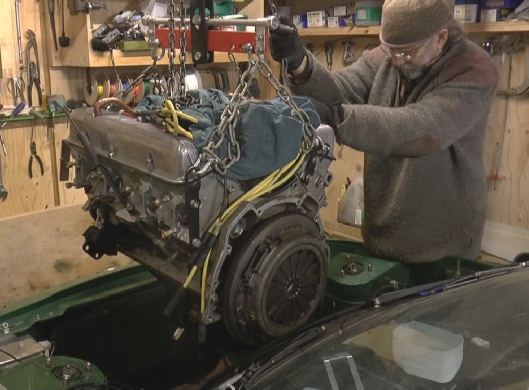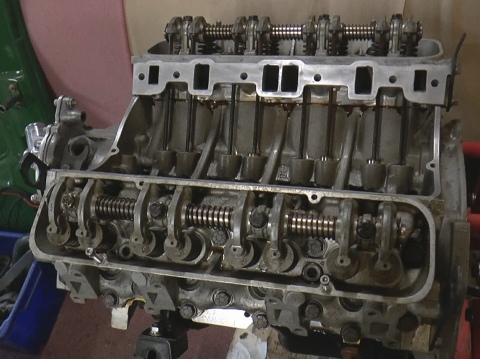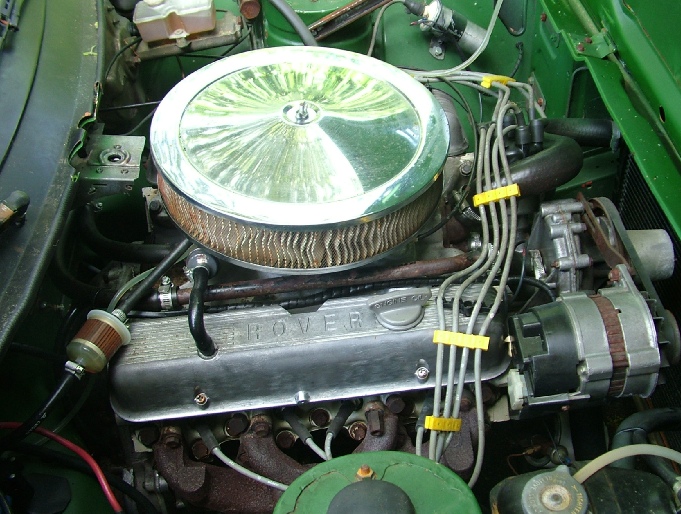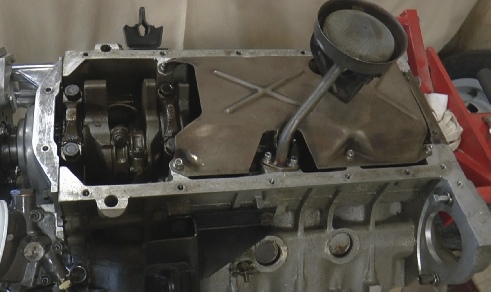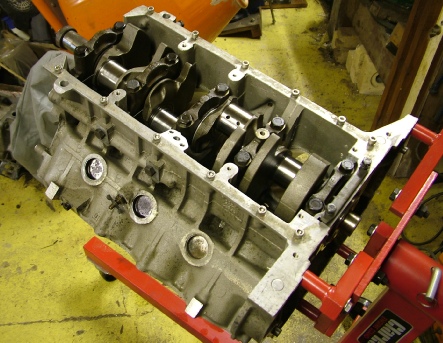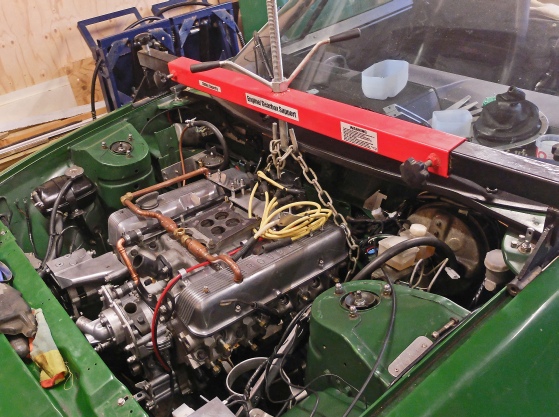
 Home
Home



TR7 V8 engine swap
The engine which had been fitted was an early Range Rover unit and not withstanding the Holley carb was unlikely to be providing more than about 120hp. It was fuming a lot from the engine breathers which I guess means worn piston rings. (Even though the breathers fed into the pancake filter, at idle or closed throttle, fumes would leak out of the filter into the engine bay. Because of the lack of available space, the heater duct, which directs air through the grill at the rear of the bonnet, had been deleted. This meant the fumes were fed into the cabin which was unpleasant to say the least.) Compression was also down.
No heater duct
I had 3.5 litre Vitesse engine from an SD1 to hand and I had our local firm The Cornwall Engine Company grind the crank, rebore, skim the heads etc. The Vitesse engine had recently had new camshaft and followers, so I refitted those in their original positions. I fitted a duplex timing chain and steel sprockets.
I used steel head gaskets rather than composite to preserve the best compression ratio and used plenty of Wellseal jointing compound.
I sanded bottom plate of the oil pump flat (rub on 100 grit wet and dry paper on a flat surface lubricated with WD40 then 240 grit) and fitted a new relief valve and spring.
As mentioned elsewhere, I removed the water pump and thermostat and replaced them with a blanking plate and outlet pipe.
I kept the Range Rover rocker covers as they look a lot more old-
With tubular headers, the Holly carb and Megajolt distributor-
Range Rover engine
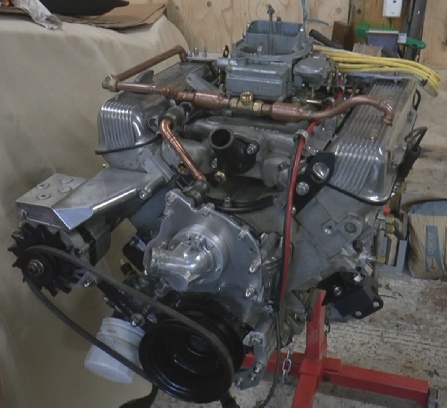
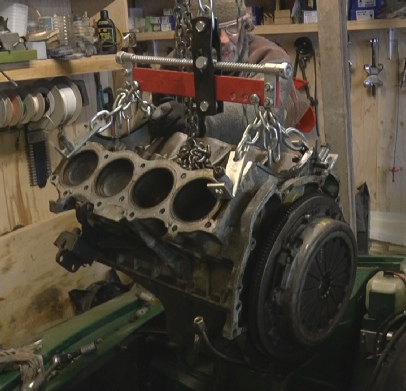
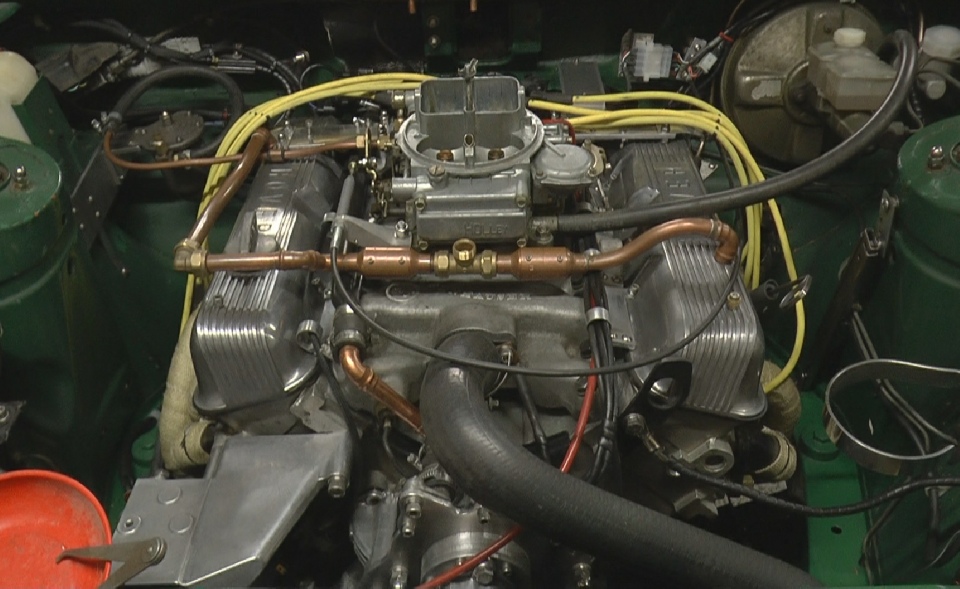
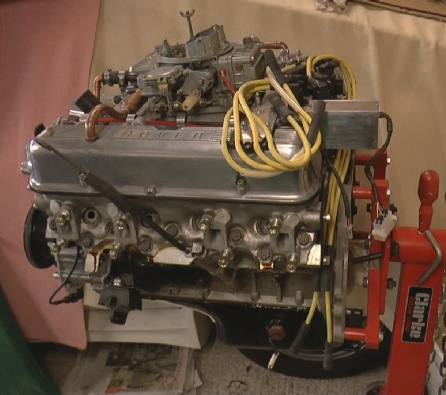
Old engine out…
New engine in.
Quite shiny -
Reground mains and big ends.
Twin Plenum Vitesses had double valve springs -
Here you can see lack of a water pump.
Chain hoist v. Engine crane.
In a relatively small garage a chain hoist definitely wins out as you need so much less flat floor space than with a crane. Also if you are working by yourself, It’s easier to push the car back than to pull the crane back when you want to put the engine back down on a trolley or the ground. Also the hoist is a lot cheaper. (The load leveller is very helpful, by the way.)
Depending on the structure on which the hoist is attached it might be necessary to add some reinforcement to avoid a dreadful accident. The joist above in my case has some angle iron bolted to it and I jack up the beam with a couple of pieces of 75x75mm and two scissor jacks placed as close to the car’s wings as convenient when I am using the hoist.
75x75mm timbers hold up roof!

Flashback arrestors made from 22mm non-
I’m not sure about how elegant copper plumbing pipes look on a post-

Filter King pressure regulator and filter
Holly with choke butterfly removed
Custom cold start device




Distributor will still be needed to drive oil pump.

Coil packs for Megajolt ignition

Trigger wheel sensor for Megajolt ignition fits here

These UNC bolts had to be shorter than original but were too long to be standard so had to be replaced with stainless studding and dome-


As is obvious from the pictures, I separated the gearbox and engine and slid the gearbox out from underneath using the helpful Draper transmission jack. This does mean the rear of the engine needs to be kept up while this si going on with an engine support beam.
Removing the engine without the gearbox is so much easier and it becomes a job that can be done single-
Engine support

